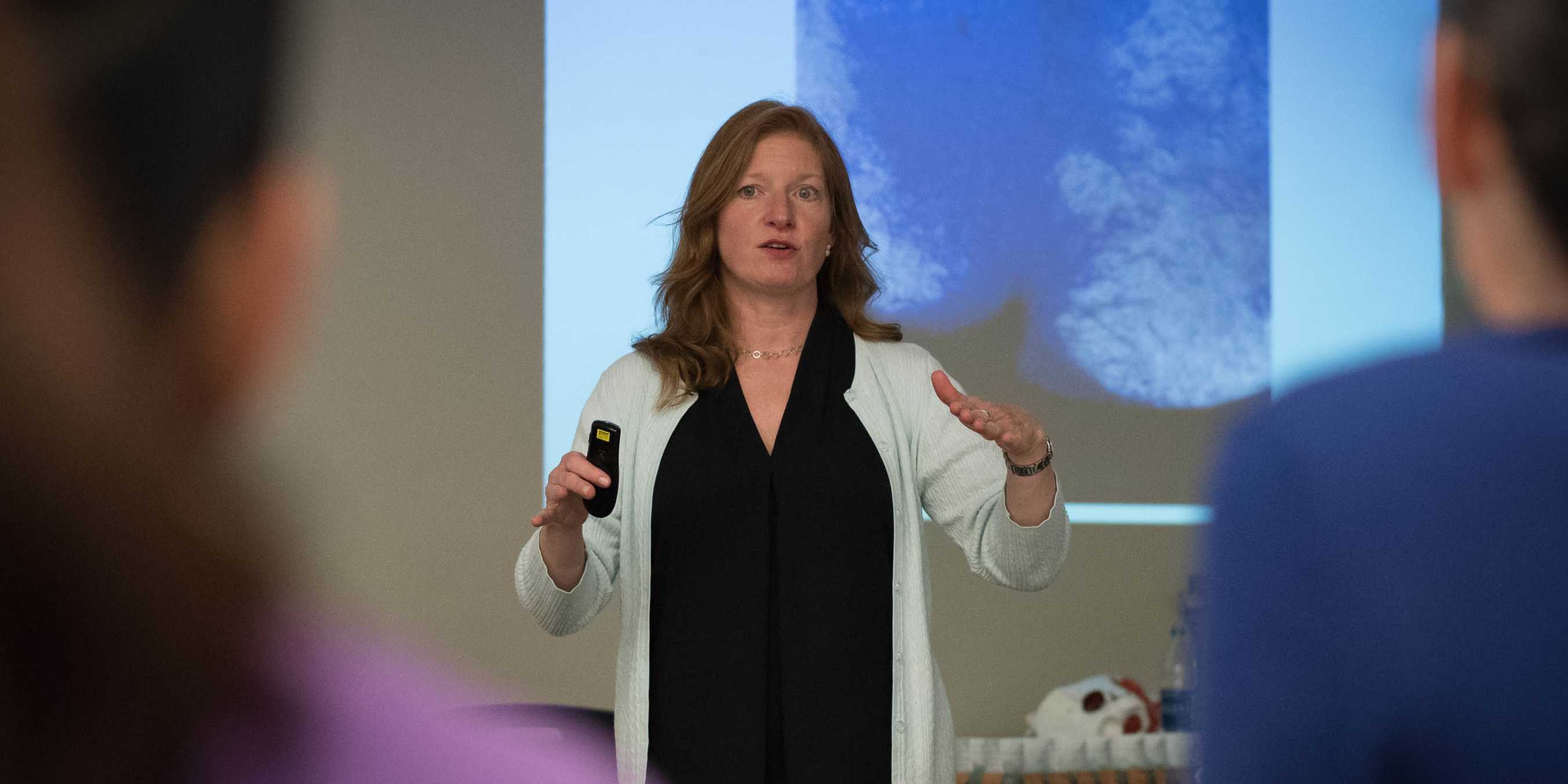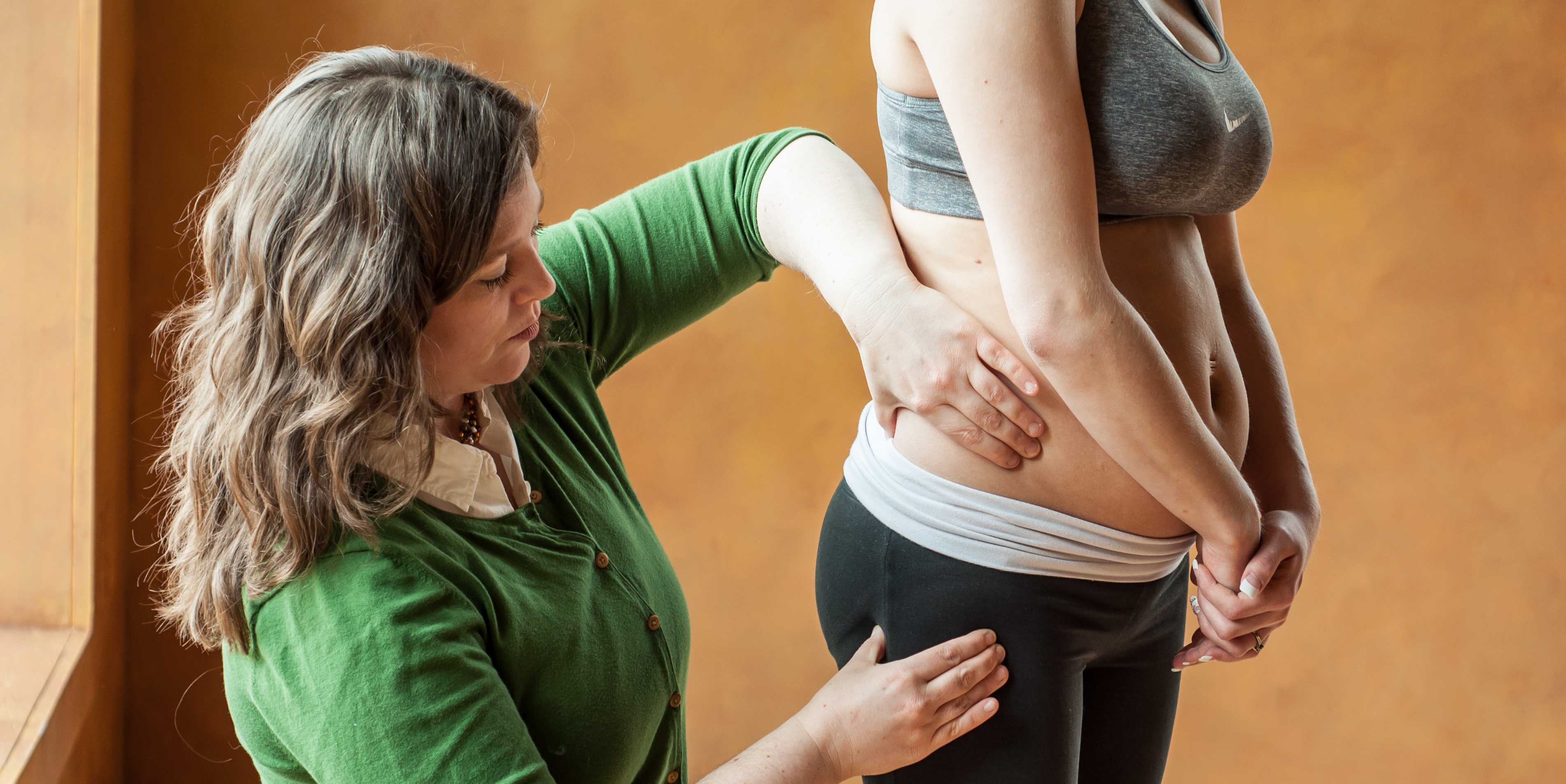
How does it assist with return to activity?
I recently had a conversation with a sports medicine physician with whom I have shared patients for the past 20 years. He is one of the ‘OG’ physical medicine and rehab physicians in my area, and he has always been a huge advocate for rehab therapies. This physician has spent countless hours in rehab gyms sharing with and learning from physical therapists.
He reached out to me about a mutual patient with a three-year history of pelvic girdle pain that was limiting their activities, including sitting and cycling. This patient was referred to me 6 months ago after plateauing with his sports medicine PT and interventional pain medicine physicians. They had undergone interventions including medications, injections, PT, and group therapy CBT for persistent pain. However, pelvic rehab shifted the needle for this patient, and the physician wanted to learn more about what helped.

As Rehab professionals we help our patients by listening to them, allowing them space to hear their body's wisdom, and educating them on how their bodies work. When it comes to educating people about their bodies, we often use pictures, models, and verbal explanations of movement and function. In addition, one of the best ways we can teach them about how they move is by actually touching them. By allowing them to learn where they are holding greater tone or how to move in a different way, we give them insight into their body and give them a way to move forward in their recovery.
Manual therapy is a modality that we can utilize to help a patient become aware of a part of their body that they did not realize they had the ability to control or change. Take the example of living next to an airport – after a while we may not hear the planes anymore – now take this example to our bodies. Many of us, including our patients, are not aware of the way we hold our bodies. We are unaware that we are holding increased tension in our body and that we have the ability to control the muscle activity of our body. By using manual therapy, we help the patient gain access to the part of their body and help them learn how to manage or change that part of their body.
Fascia is defined as “a three-dimensional continuum of connective tissues present everywhere throughout the body, from the head to the toes and from the skin to the bone.” 1, 2 When reading about the attachments of the abdominal fascia we learn that there are connections from the abdomen to the breathing diaphragm, the pelvic floor region, and the lateral hip.3, 4 By addressing the abdominal wall superficial fascia, deep fascia, and abdominal muscles we can also assist these other areas of the body. Improving breathing, trunk mobility, the pelvic girdle, and the function of the genitourinary and gastrointestinal systems to name a few.

Tina Allen, PT, PRPC has been a physical therapist since 1993 and has specialized exclusively in pelvic health in all genders and throughout the patient's life span for the past 28 years. She works at the University of Washington Medical Center in a multidisciplinary Pelvic Health Clinic where she collaborates with physicians to optimize patient recovery. Join Tina in her upcoming course Manual Therapy of the Abdominal Wall scheduled for November 18, 2023.
One option in our written documentation is to include information on pain, pigmentation, pliability, surface area, height, and patient-reported functional limits due to the scar. This can be time consuming and is difficult to replicate between sessions. As practitioners, we need to be able to show specific gains for insurance and to assist patients (and ourselves) in recognizing gains.
Tina Allen, PT, PRPC has been a physical therapist since 1993 and has specialized exclusively in pelvic health in all genders and throughout the patient's life span for the past 28 years. She works at the University of Washington Medical Center in a multidisciplinary Pelvic Health Clinic where she collaborates with physicians to optimize patient recovery.
Manual Therapy for the Abdominal Wall instructs participants on manual myofascial techniques that can be utilized to assist with the treatment of abdominal scars, endometriosis, IC/PBS, and abdominal wall restrictions that impact pelvic girdle dysfunction. The abdominal wall plays an intricate role in our general movement, digestion, continence, and support.
Scar tissue limits range of motion and can perpetuate pain and dysfunctional movement. Myofascial techniques can loosen and break up scar tissue to restore normal function. This manual therapy should be performed in a slow and precise manner that can stimulate the nervous system and can be used to effectively treat several conditions including trauma, inflammatory responses, post-surgical procedures, and postural conditions.
Everyday we as pelvic rehab providers get to help patients achieve their goals by meeting them where they are and guiding them along.
A couple of months ago I had a new patient come in to see me who was seven months status post c-section delivery of her first child. She was referred to physical therapy because she could not tolerate anything touching her lower abdomen and she was also unsure of how to start exercising again including returning to her yoga practice. I remember reading her referral and thinking that this should be a simple evaluation and treatment session. What actually happened was a little different.
Her delivery hadn’t gone the way she planned, and she was not comfortable discussing it at our first session. This patient had not looked at or touched her c-section incision besides drying it off after her shower for the seven months since delivery. Her physician had made a referral to PT and to a counselor within three months of delivery to help support the patients’ recovery. The patient had not followed through with the PT referral until she had significant encouragement from her counselor and physician.
My name is Tina Allen. I teach a course called Manual Therapy Techniques for the Pelvic Rehab Therapist. I developed this course in 2016 out of desire to help clinicians feel comfortable in their palpation and hands on skills.
My journey as a pelvic rehab therapist started with a patient whispering to me in the middle of a busy sports/ortho clinic gym; “is it normal to leak when you laugh”. I was treating her after her total hip replacement and my first question was “where are you leaking”? I was concerned that her incision was leaking, that she had an infection and it was beyond me to understand why it would happen when she laughed! I was 24 years old and 2 years out of PT school. Little did I know, that one whispered question would lead me to where I am today. I am in my 25th year as a PT and 20th year specializing in pelvic rehabilitation.
When I started out there just were not many classes. I spent time learning from physicians, reading anything I could find and applying ‘general ‘orthopedic principles to the pelvis. I traveled to clinics and learned from other clinicians. I soaked up anything I could and brought it back to my clinical practice. When Holly Herman and Kathe Wallace asked me to teach with them I was humbled, honored and terribly nervous. Holly and Kathe where two of my greatest resources and to be able to teach along side them to help others along was humbling. As I prepared to teach I realized the breadth of what we do as pelvic rehab clinicians has grown exponentially since I started out.
The following post comes to us from Herman & Wallace faculty member Tina Allen, PT, BCB-PMD who teaches many courses with the institute. Tina's new course, Manual Therapy Techniques for the Pelvic Rehab Therapist, will be debuting this October in San Diego, CA.
As a physical therapist who has been treating pelvic floor dysfunction for 20 years, the patient who still impacts me the most happens to be the second patient I ever treated. The patient was a 22 year old woman who, before she even was referred to me for pelvic pain, had already seen 14 medical providers and experienced 10 procedures including a hysterectomy. She had been told by more than half of her providers that this pain was “in her head”, that “she needed counseling”, and that there was no reason for her pain. With 4 years of clinical experience at the time, I felt discouraged and wondered how I was going to help her. Then I remembered that no one else could look at her muscles and biomechanics like a PT could.
I started out by educating her about the muscles “down there”, observed how she moved with her daily tasks and then I completed her seemingly first ever muscular evaluation of the perineum. After 6 sessions of down training, muscle reeducation, manual therapy, strengthening of her hip and teaching her how to self mobilize the tissues of the perineum, she reported a pain level of 3/10- the lowest her pain level had been since she was 13 years old! Of course, she asked why it took so long for her to be referred to PT.
In our weekly feature section, Pelvic Rehab Report is proud to present this interview with Herman & Wallace instructor Tina Allen, PT, BCB-PMD, PRPC
How did you get started in pelvic rehab?
I was about 5 years into my career as a PT when for some reason I had patients who where comfortable with me enough to ask questions like, "I'm leaking. Is that normal after giving birth?", "Since my total hip replacement I've been leaking urine" and "I have pain sometimes when I'm have sex...is that normal?". I was working in Outpatient Orthopaedics and I had no idea if it was normal. I searched and found out that it wasn't. After whispering to my patients that it wasn't normal, that I read that there where things they could do about it and then slipping them pieces of paper with instructions on how to maybe make it better; I decided I should learn if there was something a PT could do to help. I spent time with Ob/Gyn's and Urologists learning from them and applying my musculoskelatal knowledge to what they taught me. I was still in denial that I could help folks but then I started getting patients specifically referred to me for these conditions. I finally found that there where classes I could take! Imagine! That was 20 years ago now!



































